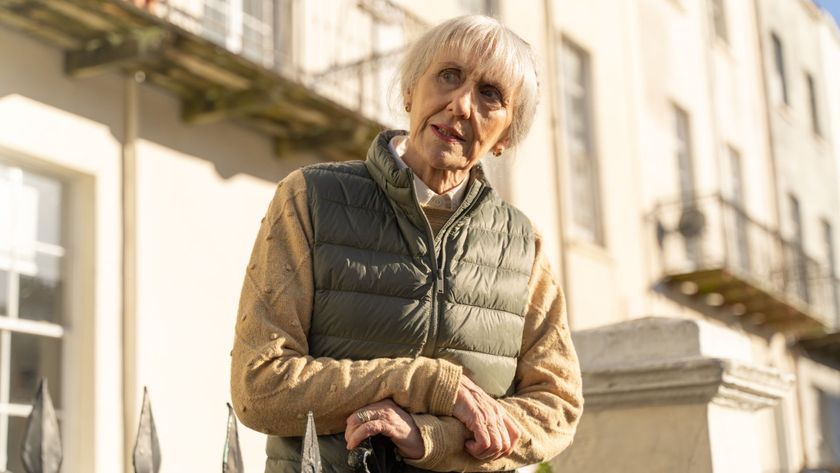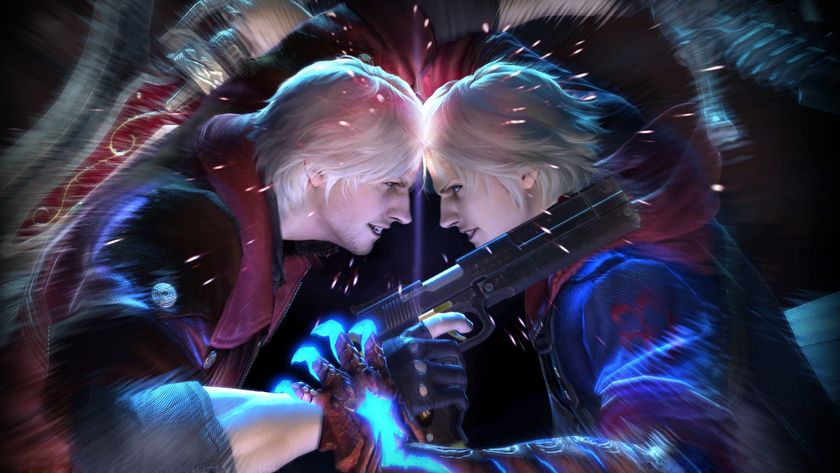Being Human: Being The Production Designer
Andrew Purcell, the Production Designer on Being Human, explains what his job entails.
Being Human production designer Andrew Purcell discusses his work on the series.
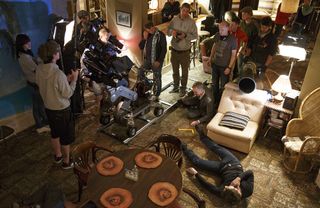
If you love the shabby-chic look of Honolulu Heights, then Andrew Purcell is the man to thank. He's worked on Being Human from the very beginning, throughout all five series. As the show’s Production Designer, he’s been the driving force between all its key environments, creating George, Mitchell and Annie’s house in Bristol, the former B&B that later became their home, and most recently, Tom and Hal’s new workplace, the Barry Grand hotel.
“My job is to look after the physical, visual side of things, in terms of sets and props and effects”, Purcell explains. “I help find the locations and then turn them into appropriate places for the drama to happen. We’ll decorate a location and dress it according to the character and what we would assume those character’s choices to be.
"You’ll find something that is physically good in terms of being practical to film in, and has a good amount of performance space. Then I bring in the detail and personalise the space. That can involve construction, it can involve decoration, finding props - from furniture to the books they read, the pictures they have on the wall, what they eat their food off… absolutely everything that anybody lives with, you’re providing for that character. It gives you an opportunity to give background texture to the character, and allows the audience to get a bit more information about them.”
It all starts with the script.
“The script gives you a framework,” Purcell says, “And you’re adding more flesh onto the bones of that. It’s such a collaborative process, making TV. It involves an awful lot of people - the writers, producers, directors - and everybody will have ideas. It’s not a fine art at all, it does grow out of conversations, and quite often scripts will be changed and adjusted according to ideas that come out of those conversations.”
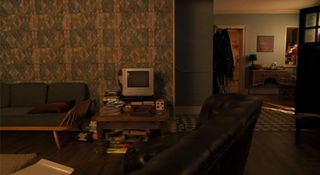
When it comes to set dressing, Being Human has a very distinctive look. That’s partly because the series was initially made in Bristol, and is now made in Cardiff.
Sign up to the SFX Newsletter
Get sneak previews, exclusive competitions and details of special events each month!
“There are a lot of prop houses in London where you can hire furniture and ‘smalls’ - all the paraphernalia that people live with”, explains Purcell. “But I think there’s only one hire firm in Cardiff, which is fairly limited. So I’ve developed a style for Being Human where most of it is found. I’ve been to pretty much every charity shop and second-hand shop around Cardiff and Bristol! It makes it much harder. If you go to a hire firm you can prop a room in a couple of hours because you have it all there in front of you, whereas when you go out buying, you might spend a morning going around second-hand shops and come back with a chair and a teapot! So it’s very labour-intensive, but it makes it very personal.”
Working on something like Being Human is completely unlike some of the other series Purcell works on, because it’s a show with such a rich mythology.
“The joy of something like Being Human is that you enter a fantasy world, and we talk about it as if it’s real! Yes it is a completely invented mythology, and a set of rules which quite often get broken for the convenience of plot, but we do take it seriously.”
For example, different supernatural creatures might keep different things in the bathroom.
“When somebody changes into a werewolf”, Purcell explains, “We consider what their body goes through and their recovery period and what they might have in the medicine cabinet to help ease joints and help themselves repair. With a vampire that’s on the wagon, we think about things they might avoid, like alcohol, and things they might have in their diet to try and compensate.”
Similarly, the musical tastes of vampires reflect their supernatural longevity.
“They’ve lived for hundreds of years, so Mitchell would’ve gone through everything, from Caruso to what’s happening now. So he could go to his room and listen to a bit of Caruso on a wind-up gramophone or a bit of early jazz, or a bit of Miles Davis. And Hal has been a 20-year-old for 500 years, so he’s experienced every step on the cultural spectrum. He has an old-worldliness about him and finds the modern world difficult, so he’ll always make choices that seem a bit old for him, and if you met him you’d feel slightly awkward in his presence, because he’s out of sorts with the modern world.
“Vampires have got that worldly knowledge within them, and they can tap into that experience. They aren’t set in one period or locked into a particular taste, because they’ve experienced so much. You take all that on and use that to inform your decisions about how they live. We think about it very seriously, so that you build up a texture around them that is believable.”
This kind of attention to detail results in some very peculiar arguments in tone meetings, of the sort you don’t get working on your average drama.
“Quite often you’ll find yourself saying, ‘A werewolf would never do that’, or, ‘Vampires just wouldn’t do that’… Well, this is ridiculous, we’re talking about something that’s a complete fantasy, we can do anything we want! But even though it is fantasy, you have to create a framework and a sort of reality around it.”
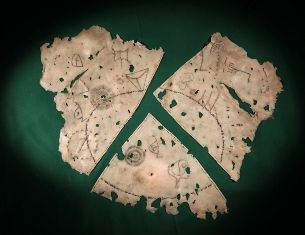
That mythology is being built upon all the time, of course. The vampire base in series four provides a good example.
“The iconography of the vampires was completely invented. We had the altar that I created, as if it was a holy relic: the bones of the first vampires. Then there were the scrolls. It was written as ordinary scrolls, and we decided it would be more interesting if the parchment was human skin. I made that myself from a prosthetic of a torso that Casualty was throwing away! We skinned the torso and made the parchment out of the skins. Then we had to invent the whole language of the runes, and we stitched that into the skin and punched hair in, so it felt completely convincing.”
Click on "Next" to keep reading our Andrew Purcell interview.
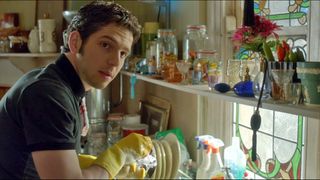
When it comes to our heroes’ domestic environment, certain patterns have established over the years. For example, the Bristol house featured a button-back sofa, and so does the living room in Honolulu Heights.
“You develop a feeling for things”, Purcell explains. “When George and Mitchell first got together, the sofa they spent their time on was a button-back sofa because that felt very vampirey. It came to be iconic, that sofa. So I carried that through, just as a little motif.”
The dynamic between the two friends was also reflected in a similar way in both houses.
“With Mitchell being super-cool and George being a bit of a geek, as mates, the super-cool mate always wins - if ever they toss a coin, they’re always going to win. So with the original set, Mitchell ended up in the best room in the house, and George ended up in an old kid’s bedroom with this spooky gnome wallpaper. We took that on when they moved to Barry - George got the bridal suite full of frills, and Mitchell got the cool bedroom with the ‘70s wallpaper. So you invent things along the ways to help you make decisions. Being involved with a long-running series right the way through, things build up around the characters over the years and it becomes like second nature.”
And the environments keep evolving too – often in subtle ways that the casual viewer might not notice, except on a subliminal level. Honolulu Heights, for example, used to reflect Annie’s personality, and now is increasingly reflecting Hal’s.
“In series four, Annie had made Honolulu Heights more homely - a softer environment, and more about her. So it was a bit busier and there was more dressing, stuff that she’d rummaged around and found in the attic. In series five, Hal is controlling the look of the place. The video collection is alphabeticised, and everything is set up in pairs and tidied up. The look of the place is very smart and shiny, whereas with Annie it was much messier. Suddenly, behind the bar, instead of being a mess of cocktails and empty bottles, all the glasses are lined up in order of size, and everything’s squared away. It’s not something you want people to notice directly, but you want people’s feelings to be influenced by what you do.”
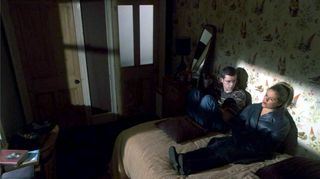
The changes can’t be too radical, though, for the simple reason that our heroes are too busy with more important matters to spend much time on interior design!
“The last couple of series have been two very big adventures, so there’s been no time for any homemaking”, Purcell points out. “Sometimes people look at the sets and say, ‘They look a bit cold, there’s not enough of our characters’ personality in there’, and I have to say, ‘Well, you haven’t given them any time to do homemaking!’ With series four they were rather preoccupied fighting the Old Ones and saving the world to be thinking about changing the wallpaper! So I’ve had to be inventive in trying to soften things with stuff that might already exist there, rather than having them going late-night shopping at IKEA! You’re trying to keep a logic to it as well as meeting all those requirements.”
At the same time, as well as making sure that the sets reflect both the characters and their personal situation, Purcell has to make a place like Honolulu Heights somewhere the viewers want to spend their time.
“You want it to be a little bit kitsch”, he says, “But also homely and a fun place to be. You don’t want to alienate your audience by being so scuzzy and ghastly that nobody wants to come back - you want a bit of warmth and a bit of humour. Quite often, when you go around second-hand places, you see bits of furniture that look horrendous, but when you take them out and put them on their own they become quite funky pieces. Some people have a real talent for that - taking surprising things and arranging them in a way that makes you re-evaluate them. So you try and bring a bit of that to it as well. You’re not only trying to design for your characters and for your writers and directors, but in a funny way you’re also trying to design something for your audience too.”
Ian Berriman twitter.com/ianberriman
Read our piece on how the Being Human team make their werewolves .
Read our interview with Being Human script editor Laura Cotton.
Read our Being Human series 5 reviews.
Ian Berriman has been working for SFX – the world's leading sci-fi, fantasy and horror magazine – since March 2002. He's also a regular writer for Electronic Sound. Other publications he's contributed to include Total Film, When Saturday Comes, Retro Pop, Horrorville, and What DVD. A life-long Doctor Who fan, he's also a supporter of Hull City, and live-tweets along to BBC Four's Top Of The Pops repeats from his @TOTPFacts account.
